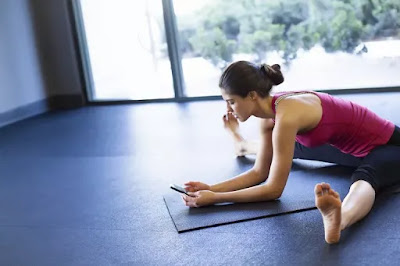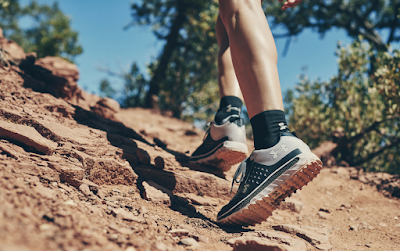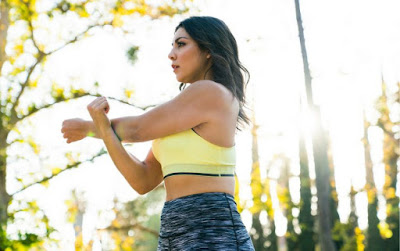Type "sexual health" into a search engine, and it is likely that you will be bombarded with pages of articles covering anything and everything, from sexual norms and advice on relationships, birth control, and pregnancy, to information about STDs and how to avoid them. What is less often discussed, however, is the abundant physical and psychological health benefits of sex. We have put together a list of the top health benefits of sex, as backed up by science.
Sex has numerous physical and psychological health benefits.
In exploring just how sex affects the mind and body, the list of potential benefits appears to be endless.
Aside from reproduction, pleasure, and intimacy, sex seems to have a positive impact on many life areas, including work, physical and cognitive performance, marriage, and happiness into our senior years. Sex may also have a positive effect on certain organs and conditions, as well as a preventive effect on some diseases.
For example, a recent
study published in the Journal of Management found that maintaining a healthy sex life at home might boost job satisfaction and engagement at work.
Sex may also play a fundamental role in preserving a happy marriage, according to research published in Psychological Science. Partners are suggested to experience a sexual "afterglow" that lasts for up to 48 hours following sexual intercourse. This afterglow is associated with higher levels of long-term relationship satisfaction.
Sex is also considered a significant form of exercise. Sex burns around 85
calories, or 3.6 calories per minute, according to a study published in PLOS One.
These few examples are a drop in the ocean of the numerous health benefits of sexual activity and masturbation that are presented in studies from around the globe. Medical News Today provide the low-down on the top evidence-based health benefits of sex.
1) Improves Immunity:
Participating in sex one to two times per week appears to be the optimum frequency to boost the
immune system, according to research published in Psychological Reports.
Scientists can test how tough our immune systems are by measuring levels of an antibody called immunoglobulin A (IgA) in saliva and mucosal linings.
Study authors Carl Charnetski, from Wilkes University in Pennsylvania, and his colleague Frank Brennan found that people who had sex once or twice per week had a 30 percent increase in IgA. However, the same results were not seen in individuals who had sex more or less frequently.
Clifford Lowell, an immunologist at the University of California-San Francisco, says that people who are sexually active are exposed to more infectious agents than individuals who are not sexually active. The immune system responds to these infectious agents by producing more IgA, which may protect against colds and
flu.
For those of you who have sex more or less frequently than the optimal amount, fear not. According to another study by Charnetski, petting a dog can also significantly raise IgA.
2) Good For The Heart:
Physical activities that exercise the heart are good for your health, and this includes sex. Being sexually aroused increases heart rate, with the number of beats per minute peaking during orgasm.
Men who have regular sex are 45 percent less likely to develop heart disease.
Men, in particular, have been shown to benefit from the effect of sex on the heart. A study published in the American Journal of Cardiology, involving men in their 50s, suggested that men who have sex at least twice per week have a 45 percent reduced risk of
heart disease, compared with men who have sex less frequently.
The American Heart Association say that heart disease should not affect your sex life. Heart attacks or chest pain caused by heart disease rarely happen during sex and, for the most part, it is safe to have sex if your heart disease has stabilized.
The heart's response to sex is comparable with mild to moderate effort encountered in daily activities, according to research published in the European Heart Journal. If you can take part in activities that have a similar impact on the heart - such as walking up two flights of stairs - without chest pain, then you can usually assume that it is safe to have sex.
More research is currently needed to draw connections between specific cardiovascular conditions and sex, particularly for women and older adults.
3) Lowers Blood Pressure:
Research conducted by Michigan State University and published in the Journal of Health and Social Behavior found that sex in later years might reduce the risk of
high blood pressure - at least for women.
Women in the study aged between 57 and 85 years who found sex pleasurable or satisfying were less likely to have hypertension. However, male study participants who had sex once per week or more were twice as likely to experience heart problems than men who were sexually inactive.
In another study published in Behavioral Medicine, researchers found that the act of hugging can help a person to maintain a healthy blood pressure.
According to the American Heart Association, high blood pressure increases the risk of heart attack and stroke and can also affect your sex life. High blood pressure has an impact on blood flow throughout the body and can prevent enough blood flowing to the pelvis.
In men, high blood pressure can lead to
erectile dysfunction and in women, high blood pressure can lower libido and reduce interest in sex. It is considered safe to have sex if you have high blood pressure. However, if you are concerned or are having problems in the bedroom, seek advice from your doctor.
4) Relieves Pain:
A headache may often be used as a reason to avoid sex. However, before you reach for the painkillers, neurologists have found that sexual activity can relieve head pain associated with a migraine or cluster headache in some people.
Sex has been shown to ease the pain associated with migraines and cluster headaches.
The research was conducted by the University of Munster in Germany and published in Cephalalgia. In individuals with a migraine, 60 percent of people reported an improvement in pain after sexual activity, while 37 percent of people with a cluster headache reported an improvement.
The University of Munster researchers explain that sex triggering the release of endorphins is the mechanism behind the pain relief. Endorphins are the body's natural painkillers and are released through the
central nervous system, which can reduce or eliminate pain the experienced with a headache.
In other research published in Pain, women were found to experience reduced pain sensitivity and had an increased pain tolerance threshold when experiencing pleasure through vaginal self-stimulation.
5) Reduces The Risk of Prostate Cancer:
Men who frequently ejaculate could be protected against
prostate cancer, the most common cancer among men in the United States.
Research led by Michael Leitzmann, from the National Cancer Institute in Bethesda, MD, and published in JAMA, discovered that men who ejaculated 21 times per month or more were a third less likely to develop prostate cancer than men who ejaculated between four and seven times per month.
Leitzmann and team have a number of theories as to why increased ejaculation may help to prevent prostate cancer.
The first theory is that frequent ejaculation may allow the prostate gland to clear out carcinogens, and materials that may orchestrate the development of carcinogens. Another theory suggests that regular drainage of prostate fluid stops crystalloid microcalcifications - which are associated with prostate cancer - from developing in the prostate duct.
Men who have more than 12 ejaculations per month may also benefit, although the researchers note that at this point, the research would not warrant recommending men to change their sexual behavior.
6) Improves Sleep:
Do you have trouble getting to sleep at night? Sexual activity could be just what the doctor ordered.
Some of the chemicals released during sex may help you to fall asleep more easily.
Insufficient sleep is a public health problem, according to the Centers for Disease Control and Prevention (CDC). Around
50 to 70 million adults in the U.S. have a sleep disorder.
Sex could be the answer to help you achieve the recommended 7 to 9 hours of sleep per night.
During sex and orgasm, a cocktail of chemicals are released in the brain, which includes oxytocin, dopamine, and a rush of endorphins. Oxytocin, also known as the "cuddle hormone," facilitates closeness and bonding, and it surges during sex and orgasm in both men and women.
After orgasm, it is thought that the effect of oxytocin, combined with the release of the hormone prolactin (which is linked to the feeling of satiety and relaxation), makes you feel sleepy.
In women, a rise in estrogen levels during sex has been shown to enhance their REM cycle, according to a study published in the Journal of Women's Health.
In men, the prefrontal cortex - the area of the brain associated with alertness, consciousness, and mental activity - "switches off" after orgasm. According to a study published in Neuroscience & Biobehavioral Reviews, this process is connected with the release of oxytocin and serotonin, both of which have sleep-inducing effects.
7) Relieves Stress:
Stress can cause all kinds of health problems, from headaches, problems sleeping, muscle tension, and upset stomach, to more severe conditions, including a weakened immune system and chronic depression.
Evidence published in Psychosomatic Medicine demonstrated that physical or emotional intimacy in couples is associated with reduced stress levels.
A study published in Biological Psychology found that people who engaged in penetrative sex experienced lower stress-related blood pressure when public speaking than individuals who had masturbated or had non-coital sex. Participants in the study who abstained from sex had the highest blood pressure levels triggered by stress.
Stuart Brody, a psychologist at the University of Paisley in the United Kingdom, hypothesized that the calming effect might be caused by the release of the "pair-bonding" hormone, oxytocin.
8) Boosts Brain Power:
Research published in the Archives of Sexual Behavior suggests that frequent sex may improve women's memory. Results from a computerized word-memory task found that women who had penetrative sex had better memory recognition of abstract words.
Frequent sex may improve a woman's ability to memorize words.
The researchers note that at this stage, it is unclear whether sex improves memory or if better memory leads to more sex. However, they say that sex may improve memory by stimulating the creation of new neurons in the hippocampus - the region of the brain that is involved in learning and memory.
Another study, by the University of Amsterdam in the Netherlands and published in Personality and Social Psychology Bulletin, found that thinking about love or sex has different effects on our brains.
Thinking about love activates long-term perspective and global processing, which promotes creative thinking and interferes with analytical thinking. However, in contrast, thinking about sex triggers short-term perspective and local processing, which then promotes analytical thinking and interferes with creativity.
9) Increases Lifespan:
Do you want to live longer? Sexual activity could hold the key to a longer life.
A study published in The BMJ concluded that sexual activity might have a protective effect on men's health.
The researchers tracked the mortality of almost 1,000 men aged between 45 and 59 over the course of 10 years. They found that risk of death was 50 percent lower in men who frequently had orgasms than men who did not regularly ejaculate.
Other research also concluded with similar results. A 25-year study published in The Gerontologist determined that in men, frequent intercourse was a significant predictor of longevity, whereas in women, those who reported past enjoyment of sex lived longer.
10) Boosts Self-Esteem:
In addition to all the physical benefits, having frequent satisfying sex may improve emotional wellness.
People who enjoy casual sex tend to report higher self-esteem and well-being.
Research published in Social Psychology and Personality Science found that among college students, those who enjoyed casual sex reported higher well-being and self-esteem levels, compared with students who did not have casual sex.
On the other side of the coin, according to a study published in the Journal of Adolescent Health, women with higher self-esteem reported having more satisfying sex, including having more orgasms.
These are just some of the many benefits that sex can have for your health. While sex can be a pleasurable and exciting activity, it is important to remember that practicing safe sex can reduce the risks of contracting STDs, as well as helping to avoid unplanned pregnancies.



















